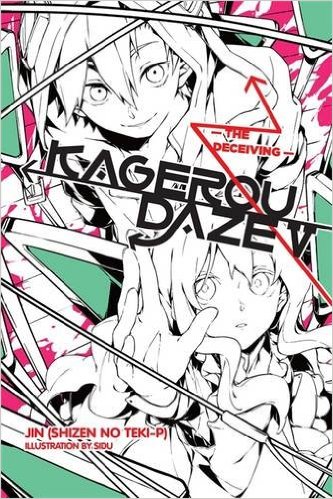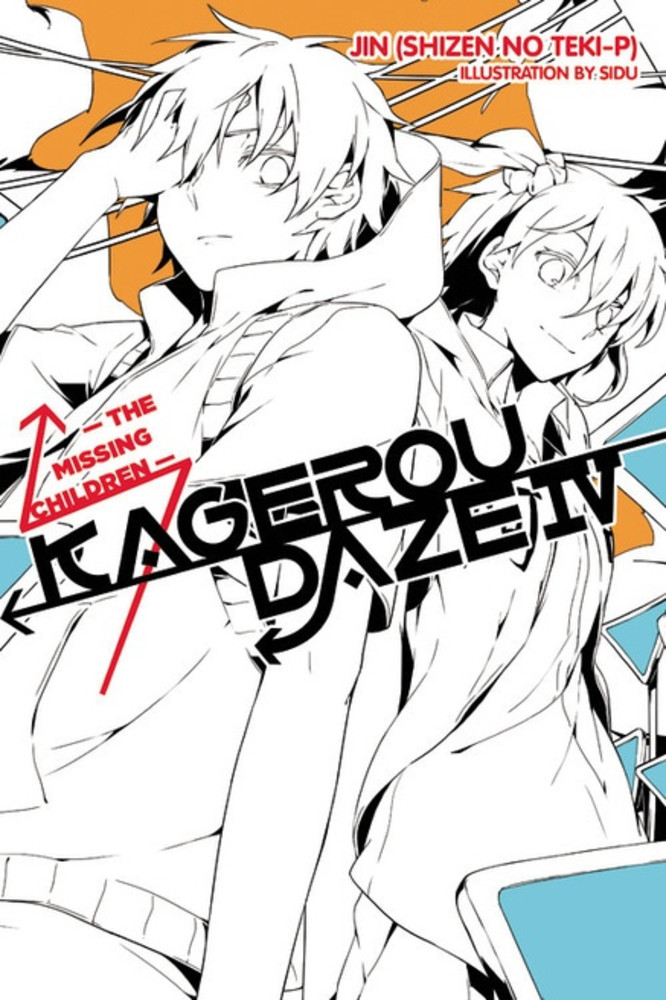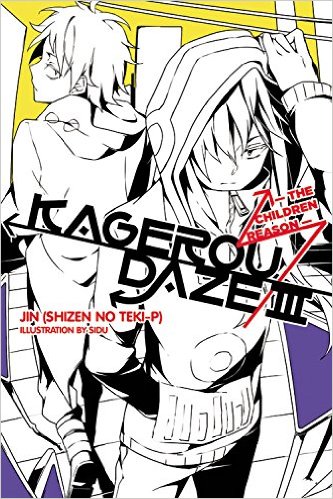By Jin (Shinzen no Teki-P) and Sidu. Released in Japan by Enterbrain. Released in North America by Yen On. Translated by Kevin Gifford.
Though not without its issues, this is still overall the strongest volume of Kagerou Daze to date. Each volume has quietly doled out tiny bits of the backstory while letting us enjoy the wacky antics of Shintaro meeting the Mekakushi-Dan. This new book ditches Shintaro entirely and focuses instead on Kano and his own tragic past, which he explains to Ene over the course of the book. It really does give me exactly what I wanted to see from the previous books – why Kano appeared to Shintaro as Ayano and gave him a nervous breakdown, why Ayano is no longer with us, a suggestion of who the main villain is (though that’s still not quite clear), and the origins of the Mekakushi-Dan, giving much needed depth to Kano and Kido, and a bit of depth to Seto, who continues to be the one character who gets nothing to do.
As it turns out, most of the kids in the Mekakushi-Dan are orphans. Kano we initially see with his mother, who psychically abuses him (and by the way, Kano’s POV of the abuse and his justification for it is chilling and very well done, possibly some of the best writing in the series to date), but after a burglar kills his mother and living with relatives is messed up by the awakening of his eye powers (turning into a dead woman is never a way to win friends and influence people), he’s sent to an orphanage where he meets Kido, who is a giant ball of anger and can’t control her invisibility, and Seto, who cries an awful lot and is also sometimes telepathic, but again can’t control it. (Kano, by the way, controls his own powers through physical pain, which is utterly horrifying, and he knows it.)
Where this ties into the rest of the plot is when all three are adopted by Ayano’s mother, and she makes the most of becoming their big sister. Unfortunately, this backstory is not meant to show us the few happy, loving years they had – in a matter of a page or two, Ayano’s mother is dead and her father seemingly possessed by the “snakes” we’ve heard about in prior books – snakes which are also in each of the group. And finally we learn why Ayano killed herself. It was not, as it had been suggested, due to self-esteem issues or anything to do with Shintaro (though when impersonating her to fake her death, Kano is not above telling Shintaro it is his fault, which of course leads to his seclusion in the first place), but to stop the snake inside her father. Did it work? Well…
The one flaw the book has to me is the wraparound plot. I knew we’d see Ene becoming Takane again at some point, but it feels very tacked on here, as if the author finally got a cutoff point from his publishers and realized he had to start wrapping things up. (The series is still running in Japan, so we have at least 2 volumes to go after this.) Also, Kano’s ambivalence to his traitorous nature, while it fits his character, is not as emotionally satisfying as I’d like – because he’s always deceiving others and himself, it’s hard to get worked up about him working for the enemy (though I suspect he’s a triple agent, to be honest.) Also, if you’re going to include a child whose physical abuse made such an impression that pain is the main thing that makes him come back to himself, don’t have his best friend constantly hitting him like a tsundere. It sends a bad message.
Overall, though, this volume represents a huge upswing in the franchise, and I am eagerly awaiting the 6th volume in the series (which may be the last for a while – we’re catching up to Japan).





